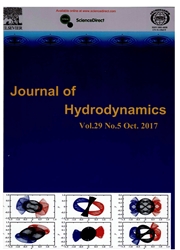

 中文摘要:
中文摘要:
为把握城市宏观交通状况,发掘城市道路网络交通流内在特性,从而达到缓解日益严峻的交通问题的目的,对交叉口流量和出租车GPS两类数据进行数据融合,运用宏观基本图(MFD)和广义宏观基本图(GMFD)在城市道路网络中的存在性以及二者之间存在的差异,以路网平均车辆数、路网通行能力和密度分布为指标来描述MFD和GMFD,并提出一种利用路段流量和出租车GPS数据拟合得到MFD和GMFD的方法,发现路网中密度的不均匀分布是导致路网通行能力不高的原因。针对由长沙市13个道路交叉口组成的区域路网,分别计算出分小区和分路段的MFD特征值,提出了根据存储空间能力(即临界路网平均车辆数的大小)对拥堵路网进行合理分流的方法,实现高峰时期拥堵路段的路径诱导以及路网通行能力的最大化。
 英文摘要:
英文摘要:
In order to macroscopically manage urban traffic and analyse the inherent characteristic of urban traffic flow on road network,and reach the aim of alleviating increasingly serious traffic problems,we fused the traffic volume at intersection and taxi GPS dada. By using the existence and difference of MFD and GMFD in urban road network,we described MFD and GMFD by average number of vehicles on network,network capacity and density distribution,and proposed a method of deriving MFD and GMFD by link volume and taxi GPS data fitting. It is found that inhomogeneous distribution of density is one reason causing low network capacity. For the regional road network which consists of 13 intersections in Changsha,we calculated MFD eigenvalues for each sub-network and each link,then proposed a method for reasonably rerouting in a congested network using road storage space,i. e.,average vehicle number of critical network,to realize the traffic guidance on congestion links in peak period and maximizing network capacity.
 同期刊论文项目
同期刊论文项目
 同项目期刊论文
同项目期刊论文
 The weaving section length optimization based on the optimal velocity car-following model and symmet
The weaving section length optimization based on the optimal velocity car-following model and symmet A discrete traffic kinetic model -integrating the lagged cell transmission and continuous traffic ki
A discrete traffic kinetic model -integrating the lagged cell transmission and continuous traffic ki 期刊信息
期刊信息
